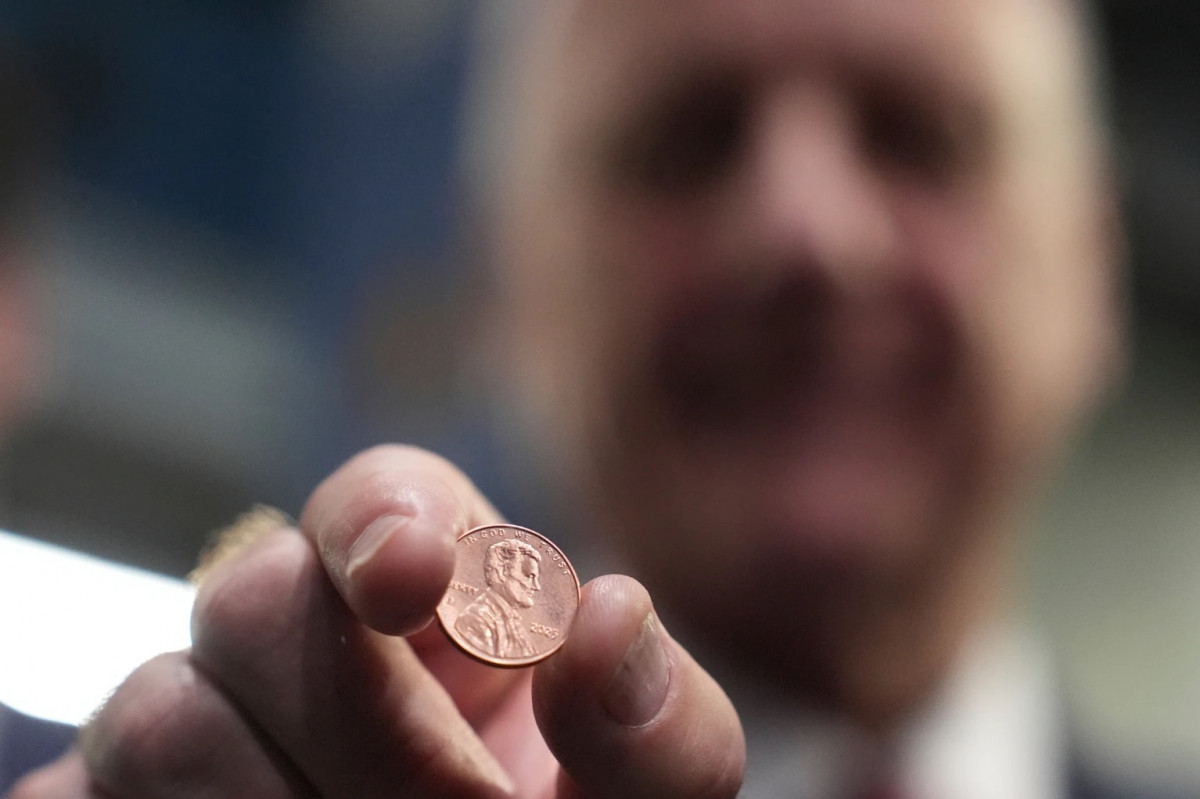(Photo courtesy of Matt Slocum) “One of the last pennies pressed at the U.S. Mint”
Olivia O’Sullivan
Connector Staff
On Nov. 12, 2025, after over 230 years in circulation, the last pennies were minted in Philadelphia at the U.S. Mint. The Mint has announced an auction for the final coins produced.
President Trump directed the Mint to stop producing pennies due to high production costs, with a single penny costing about four cents to mint.
U.S. Treasurer Brandon Beach praised Trump’s plan, stating that, “ending production saves taxpayers more than $56 million a year.” According to Beach, the Mint was paying roughly 3.69 cents for every penny manufactured.
In the Mint’s 2024 annual report to Congress, it was recorded to have lost $85.3 million from the production of $3.2 billion pennies.
The unsustainable production costs have led to lobbying groups advocating for the penny’s retirement.
Demand for physical currency, especially smaller change, is decreasing with the rise of cards and contactless payment.
Federal Reserve data reports that cash payments made up about 14% of all consumer payments in 2024.
The American Bankers Association estimates that there are 300 billion pennies in circulation.
The U.S. Mint predicts that pennies will remain in circulation for about 30 years, the average lifespan of a coin after production ceases.
Pennies will still be accepted as currency. For now, retailers can price their products down to the cent.
Even with billions in circulation, some businesses and banks have already reported penny shortages.
As time goes on, pennies likely will not be reflected in price totals. It is speculated that retailers will ultimately need to round their prices up or down to the nearest nickel for cash transactions. For other forms of payment, totals will remain exact to the cent.
This could bring legal issues for merchants, as multiple states and districts have cash laws ensuring that individuals paying with cash are not disadvantaged compared to those using card or electronic payments. If retailers round up cash purchases, they could be violating these laws.
On the other hand, SNAP regulations order that its recipients are not charged more than other customers. If retailers round down for cash purchases, they could be violating the USDA’s rule.
For these reasons, the National Association of Convenience Stores met with Treasury officials on Sept. 30 and wrote to Congress, asking lawmakers to establish a national law allowing retailers to round to the nearest nickel. No national laws have been established yet.
The penny was one of the first coins produced by the U.S. Mint, issued in 1793.
This news marks the first time that the U.S. has stopped production of a circulating coin since the half-penny’s retirement in 1857.
When asked about her reaction to the penny’s retirement, UMass Lowell freshman Grace Murf said, “It makes me kind of sad. I mean, what’s going to happen to the souvenir penny machines? I guess we don’t really need pennies that much, but that’s just my two cents.”
The U.S. retirement of the penny reflects not only an economic shift, but a cultural one. As society moves towards a more digitized reality, the retirement of the penny shows how efficiency often outweighs tradition.




